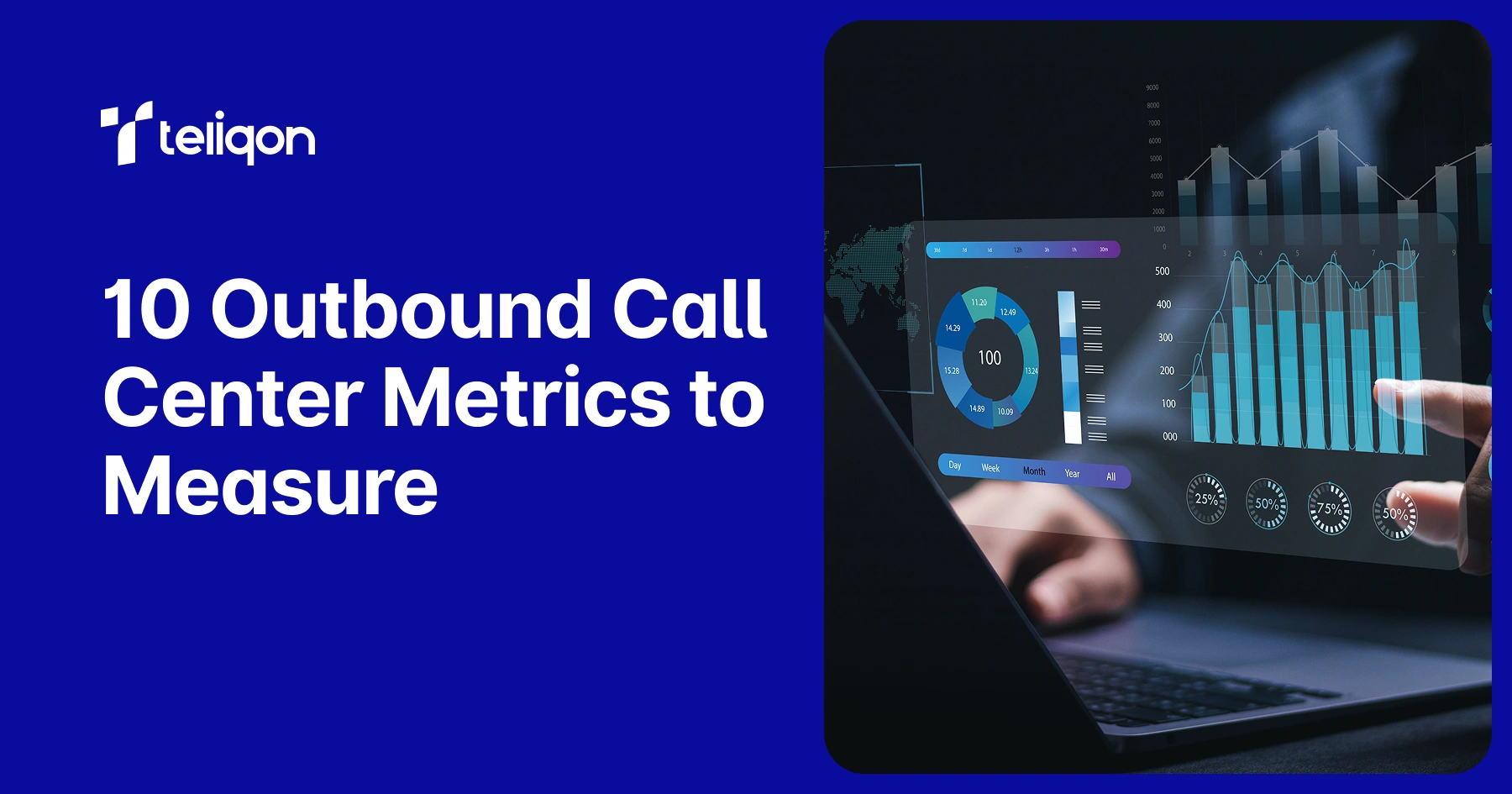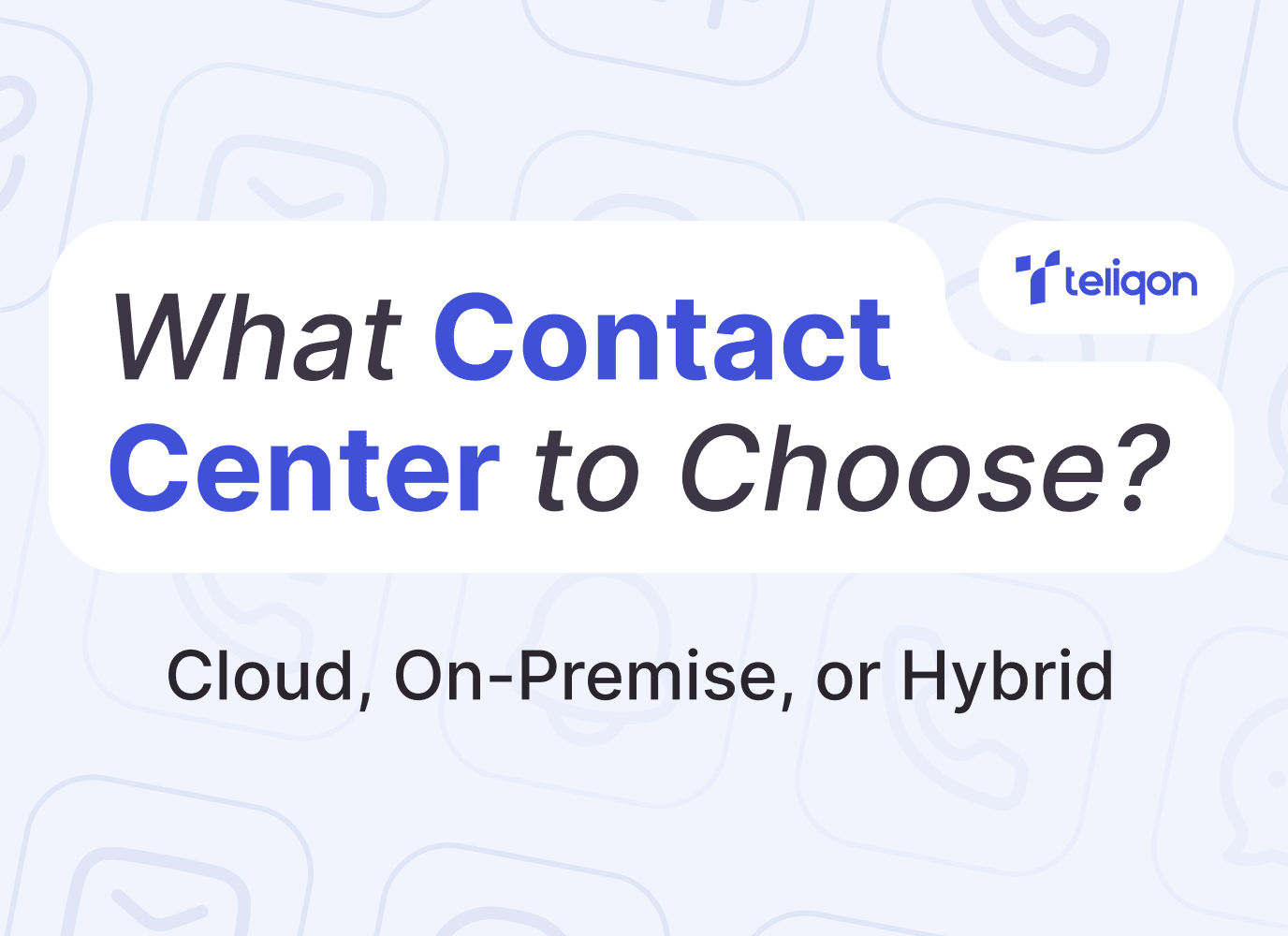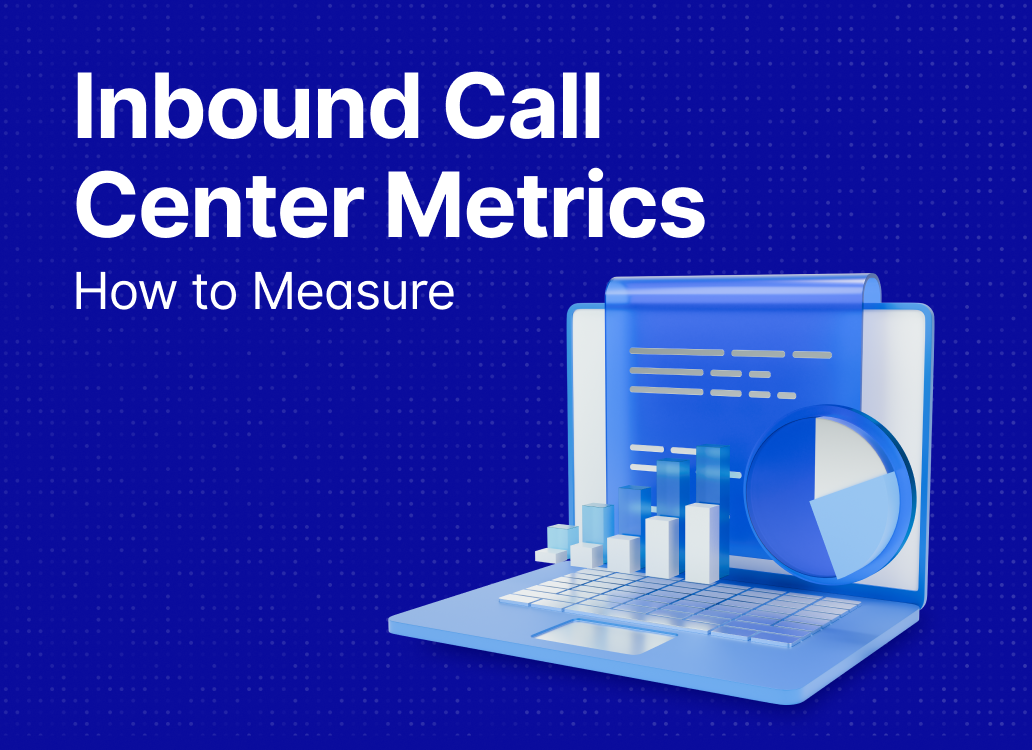

Arthur Kyselevskyi
If your team makes thousands of calls per week but struggles to connect with the right people or close deals, then something’s off – and without tracking key performance indicators (KPIs), you won’t know where to make improvements.
According to industry data, the average cold calling conversion rate is approximately 2%, meaning that for every 100 sales calls made, only two typically lead to a closed deal. This highlights the importance of refining your outbound strategy with data-driven insights. Without tracking essential metrics like Answer Success Rate, First Call Close, and Cost per Acquisition, outbound operations become a guessing game instead of a strategic, revenue-generating machine. By measuring and refining these KPIs, you ensure your call center isn’t just making noise – it’s driving real business growth.
Let’s break down the top 10 outbound call center metrics you need to monitor, the entire call center outbound sales metrics meaning, and how they directly impact your success.
Key Differences Between Inbound & Outbound Contact Centers & Their Metrics
Before we dive into an outbound call center metrics template you can follow, let’s first remove any possible confusion on the topic. You’ve probably seen more than one system of call center metrics, so let’s break down which ones suit for inbound call centers and which ones are used to measure outbound success.
Inbound call centers focus on incoming calls from users or customers and are meant to help them resolve their issues. Naturally, inbound call center success metrics determine the quality and speed of these problems’ resolution: these include average handle time (AHT), first call resolution (FCR), and other relevant KPIs. We covered inbound call center metrics in more detail in this article.
|
Aspect |
Inbound Call Center |
Outbound Call Center |
|
Purpose |
Customer support, service, retention |
Sales, lead generation, marketing campaigns |
|
Call Direction |
Customers call in for help |
Agents call out to customers or leads |
|
Key Focus |
Problem resolution, fast response times, customer satisfaction |
Sales effectiveness, agent productivity, conversion rates |
|
Typical Metrics |
FCR, AHT, FRT, Call Abandonment, CSAT |
Call-to-Conversion Rate, Calls per Agent, Pickup Rate, Revenue per Call |
Inbound is reactive, waiting for customers to call (like monitoring incoming requests).
Outbound is proactive, reaching out to customers (like pushing notifications or updates).
Inbound focuses more on service and retention, while outbound is more about sales and engagement. Hence, outbound call center metrics measure focus on sales performance, agent productivity, and outreach effectiveness.
10 Outbound Metrics
1. Answer Success Rate (ASR)
This tells you how many calls actually get answered by a human. A high ASR means your team is effectively reaching the right audience, while a low ASR suggests inefficiencies that waste time and resources.
Several factors influence ASR. Call timing plays a huge role – calling leads when they are likely available (business hours for B2B, evenings for B2C) can make a big difference. Caller ID reputation also matters; if your number gets flagged as spam, even valid leads might ignore your calls. Using local or dynamic numbers instead of unfamiliar or toll-free numbers helps establish trust and increases the likelihood of an answer.
Additionally, lead list quality is a major determinant of ASR. Old, unverified, or low-intent contact lists will drive ASR down. Running lead validation tools, removing outdated numbers, and prioritizing high-intent prospects ensures your team is not wasting calls on unreachable contacts.
How to optimize ASR?
Monitor call analytics – track which times, days, and lead segments yield the best response rates and adjust dialing strategies accordingly. If your ASR remains low despite these efforts, consider adjusting your approach: test different outreach times, improve CRM data hygiene, and explore alternative contact methods like SMS follow-ups or email outreach to warm up leads before calling.
In short, a high ASR is essential for a cost-effective outbound campaign. By refining your call strategy, lead validation, and dialing practices, you ensure that your agents are connecting with real people, leading to more meaningful conversations and higher conversions. This tells you how many calls actually get answered by a human. If your ASR is low, your team might be calling at the wrong times, using poor-quality lead lists, or getting flagged as spam. A high ASR means you’re reaching the right people at the right time. Fix it by using local numbers, calling at optimal times, and cleaning up your contact lists.
2. Calls per Agent
This one’s simple: how many calls does each agent make during a shift? If the number’s too low, they might be slowed down by clunky workflows, slow dialing tools, or spending too much time on admin tasks. Too high, and they could be rushing calls, hurting conversions and customer experience.
The goal is balance. Use tools like auto or predictive dialers to keep things moving without overwhelming agents. Real-time dashboards help managers spot both top performers and those who might need support. If call volume is off, dig into call duration, post-call work, or system delays. Streamlining with CRM integration and automated logging frees agents to focus on call center outbound sales metrics that really matter, as well as conversations that convert.
3. Conversion Rate
Conversion rate is the lifeline of any outbound call center: it tells you what percentage of your calls turn into a sale, booked demo, or other key business action. It’s not just about how many calls agents make, but how effectively they can move prospects through the sales funnel.
A low conversion rate could mean your agents need better training, your scripts aren’t compelling enough, or you’re targeting the wrong audience. Call analytics and real-time coaching can help refine sales scripts, enabling agents to adapt their approach based on customer responses. Additionally, A/B testing different sales pitches and analyzing high-performing agents' techniques can lead to improved overall conversion rates.
Some industries naturally require multiple touchpoints before closing a deal, but that doesn’t mean you can’t accelerate the sales cycle. With tools like pre-call lead validation, local number dialing, and detailed call history from Teliqon, agents can improve their chances of closing faster and reducing the need for multiple follow-ups. Closing a deal on the first call is the dream. If your FCC rate is low, you’re likely wasting time on unnecessary follow-ups. The solution? Equip agents with strong product knowledge, create urgency, and ensure they’re talking to decision-makers, not gatekeepers.
4. First Call Close (FCC)
Closing a deal on the first call is the dream and a huge efficiency booster. The FCC rate tells you how many successful conversions happen on the first call rather than requiring multiple follow-ups.
A high FCC means your team is delivering compelling pitches, addressing objections effectively, and speaking to decision-makers. A low FCC suggests that calls might lack urgency, agents may be failing to establish trust early, or follow-ups are being required due to incomplete information.
To improve FCC, equip your team with strong product knowledge and real-time objection handling scripts that help them personalize their approach. Additionally, ensure that lead qualification is thorough – speaking with decision-makers instead of gatekeepers will significantly increase first-call success rates.
Some industries naturally require multiple touchpoints before closing a deal, but that doesn’t mean you can’t accelerate the sales cycle. Using personalized follow-up emails, pre-call research, customer insights from analytics, agents can improve their chances of closing deals faster and reducing the need for multiple follow-ups. Closing a deal on the first call is the dream. If your FCC rate is low, you’re likely wasting time on multiple follow-ups. The solution? Equip agents with strong product knowledge, create urgency, and ensure they’re talking to decision-makers, not gatekeepers.
5. Average Handle Time (AHT)
The most time-sensitive among outbound sales call center metrics, AHT measures the average length of a call, including talk time, hold time, and post-call work. While some assume a shorter AHT is better, balance is key – you don’t want rushed calls that sacrifice quality, nor do you want unnecessarily long conversations that reduce efficiency.
High AHT can signal agents struggling to navigate systems, excessive hold times, or inefficient sales processes. On the flip side, an extremely low AHT might indicate that agents aren’t spending enough time engaging prospects.
Optimizing AHT involves several tactics:
-
Use call scripts as guides, not rigid scripts – allow agents to adapt their approach while maintaining efficiency.
-
Automate post-call work with call logging and CRM integration.
-
Train agents in active listening and concise communication to keep conversations productive without feeling rushed.
Speech analytics can also help identify patterns in conversations, analyzing why some calls take longer and providing real-time coaching to agents who may need help keeping interactions both effective and efficient. How long does an average call take? Too short means rushed conversations, too long means inefficiency. The best AHT balances quality engagement with quick resolution. Use structured talk tracks, AI-assisted summaries, and real-time agent coaching to keep calls effective.
6. Call Quality
Not every call leads to a sale, but every call should leave a positive impression. Call quality evaluates whether agents are engaging, professional, and effectively handling objections. This isn’t just about what’s being said – it’s about how it’s being said.
Call monitoring tools, sentiment analysis features, and call scoring systems allow businesses to assess tone, script adherence, and customer engagement levels, tackling this call center metrics outbound. Quality calls are those where agents actively listen, respond appropriately, and build rapport rather than sounding robotic or overly pushy.
To improve call quality:
-
Use call recordings for coaching sessions, highlighting both successful and poor interactions.
-
Leverage real-time AI coaching to help agents adjust their tone and messaging dynamically.
-
Encourage personalization – while scripts provide structure, adding a personal touch makes conversations more authentic.
By focusing on call quality, businesses can increase trust, improve conversion rates, and ensure long-term customer relationships, even if a sale doesn’t happen immediately. Not all calls are created equal. This metric ensures agents follow scripts, maintain professionalism, and engage prospects effectively. Sentiment analysis can track tone, script adherence, and customer engagement, helping to improve training and overall performance.
7. Dropped Call Rate
Dropped Call Rate measures the percentage of call center outbound calls metrics that end abruptly before reaching a meaningful conversation. A high drop rate could be a result of network issues, poor call routing, or even prospects hanging up too soon. This wastes agent's time and reduces the chances of conversions.
If you look at outbound call center metrics analysis, several factors contribute to a high dropped call rate. Technical problems like poor VoIP quality, weak internet connections, or outdated dialer software can all disrupt conversations. Additionally, if a contact center uses an aggressive auto-dialer that connects agents too slowly, prospects might hang up before the agent even gets on the line.
To minimize dropped calls:
-
Invest in a reliable VoIP provider and optimize network infrastructure to ensure call stability.
-
Fine-tune auto-dialer settings so agents connect with leads immediately, avoiding long pauses that cause hang-ups.
-
Improve call scripts to engage leads quickly and keep them on the line.
Reducing the Dropped Call Rate leads to better engagement, more productive calls, and a higher chance of conversion.
This is the percentage of calls that end too soon due to network issues, poor engagement, or system failures. A high dropped call rate wastes resources. Prevent it with a reliable VoIP provider, strong network infrastructure, and better call scripts to keep customers engaged.
8. Occupancy Rate
Occupancy Rate tracks the percentage of an agent’s working time spent on calls and after-call tasks, compared to idle time. A high occupancy rate means agents are fully utilized, but if it's too high, it can lead to burnout and reduced performance. A low occupancy rate, on the other hand, suggests inefficiencies in call distribution or excessive downtime.
To maintain a healthy occupancy rate, businesses should:
-
Use predictive dialers to reduce idle time while preventing overloading agents with back-to-back calls.
-
Optimize workforce scheduling so call volumes are spread evenly across shifts.
-
Leverage AI analytics to balance efficiency with agent well-being.
Finding the right balance ensures agents stay productive without experiencing fatigue, ultimately leading to better conversations and higher conversion rates. It’s one of the outbound call center agent performance metrics that influences them the most.
How much time are agents actually spending on calls vs. waiting for the next one? Low occupancy means too much idle time, while too high leads to burnout. Optimize this by adjusting dialer pacing, managing call queues, and ensuring a steady lead flow.
9. Cost per Call (CPC)
Cost per Call (CPC) measures how much each outbound call costs the business, including agent salaries, software, infrastructure, and telecom expenses. Keeping CPC low while maintaining quality outreach is key to a cost-effective call center outbound calls metrics definition strategy.
High CPC might indicate inefficiencies in lead targeting, excessive call durations, or reliance on outdated systems. To lower CPC, companies can:
-
Optimize dialing lists to focus on high-quality leads.
-
Automate repetitive tasks so agents spend more time selling, not logging data.
-
Use AI-powered call routing to connect the right agents with the right leads faster.
A well-optimized CPC ensures profitable outbound calling strategies and sustainable growth.
Outbound sales need to be cost-efficient. CPC measures how much each call costs the business, including agent time, software, and infrastructure. Lower CPC by automating workflows, prioritizing quality leads, and reducing wasted dials.
10. Cost per Acquisition (CPA)
Cost per Acquisition (CPA) is the ultimate performance metric in outbound sales, showing how much it costs to acquire a new customer. CPA accounts for total campaign expenses, agent time, and marketing efforts that go into closing a deal.
A high CPA suggests inefficiencies in targeting, script effectiveness, or agent performance. To lower CPA and boost ROI:
-
Improve lead qualification so agents are calling people who are actually interested.
-
Enhance script effectiveness through A/B testing and AI-driven insights.
-
Reduce follow-ups by increasing First Call Close rates through better training and engagement strategies.
The goal of optimizing CPA is to ensure that each outbound campaign drives revenue while minimizing unnecessary costs.
This is the ultimate outbound call center metric – how much does it cost to acquire a new customer? If CPA is too high, your sales process isn’t efficient. Optimize by focusing on high-converting leads, improving agent close rates, and streamlining follow-ups.
“Over eleven years in sales and business development, I’ve learned that numbers only tell part of the story – which outbound metric you choose to focus on shapes what parts of your process get optimized. Metrics like ASR or FCC don’t just reflect performance – they highlight priorities: speed, relevance, or persuasion. To really drive improvement, you need metrics plus insight – understanding why the numbers are off so you can make purposeful changes.”

Arthur Kyselevskyi
Chief Business Development Officer at Teliqon
Conclusion
Outbound call centers aren’t as much about making calls as they are about making the right calls to the right people at the right time. Tracking and improving outbound call center performance metrics ensures that your team isn’t just working hard but also working smart.
To get those KPIs working for your business goals, keep up with the simple measure, optimize, and repeat rule. Teliqon’s suite of products can help you conduct this task in a perfect manner and with no effort: our advanced call analytics provide deep insights into agent performance, call success rates, and lead engagement, ensuring that every outbound effort is backed by data-driven decision-making.
The latest from Teliqon
Stay ahead with insights from the leader in trusted communications. Subscribe for the latest blogs, updates, and exclusive content.



